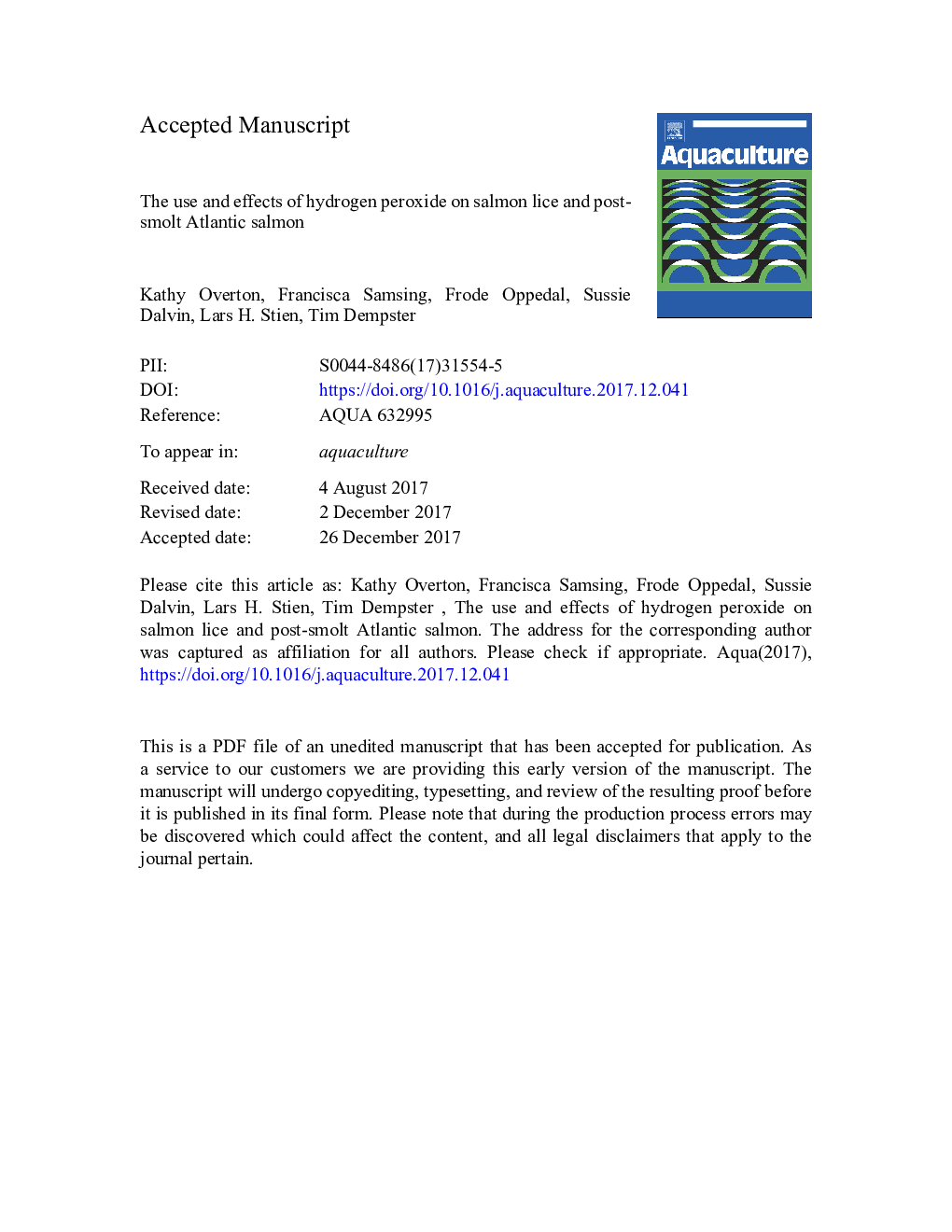| Article ID | Journal | Published Year | Pages | File Type |
|---|---|---|---|---|
| 8493440 | Aquaculture | 2018 | 42 Pages |
Abstract
When salmon lice, Lepeophtheirus salmonis, infect Atlantic salmon, they are typically removed by chemical or mechanical treatments. Delousing side effects can lead to poor welfare outcomes for fish, however reducing lice abundance in farms is crucial to reduce their ecological impacts. To determine which delousing treatments causes the highest salmon mortality, we used national-level databases to compare mortality for all delousing treatments (i.e. in-feed, bath, well-boat based, cage-based, thermal and mechanical treatments) used from 2012 to 2015 in Norway. As hydrogen peroxide (H2O2) is one of the riskiest delousing treatments with high mortality levels, we determined how hydrogen peroxide concentration (0, 1, 1.25, 1.5, 1.75, 2 and 2.25 g Lâ 1) for 20 min at 10 °C influenced post-smolt salmon mortality and mucous cells, pre-adult lice attachment, and the re-infection success of lice copepodids. H2O2 concentration strongly affected salmon mortality, but did not alter mucous cell area or density, pre-adult lice removal efficiency, or the re-infection success of lice copepodids. We recorded salmon mortality of 0% at 1 g Lâ 1, 18% at 1.5 g Lâ 1 and 100% at 2.25 g Lâ 1. Further, previous exposure to lice had no effect on salmon welfare or the likelihood of re-infection, as salmon mortality and copepodid infection success did not differ for salmon infected with lice and treated, or salmon not infected with lice and treated. We found discrepancies in salmon mortality between our experiment and industry observed mortality, with higher mortalities observed in our experiment compared to the industry. This is most likely due to the overestimation of water volume during in-cage treatments at farms, and also less organic matter present during our experiment. As we found no difference in lice removal efficacies between 1 and 2 g Lâ 1 and salmon mortality was high at concentrations of 1.5 g Lâ 1 upwards, we do not recommend increasing H2O2 dosage during treatment as a form of combatting H2O2 resistance in lice.
Related Topics
Life Sciences
Agricultural and Biological Sciences
Aquatic Science
Authors
Kathy Overton, Francisca Samsing, Frode Oppedal, Sussie Dalvin, Lars H. Stien, Tim Dempster,
